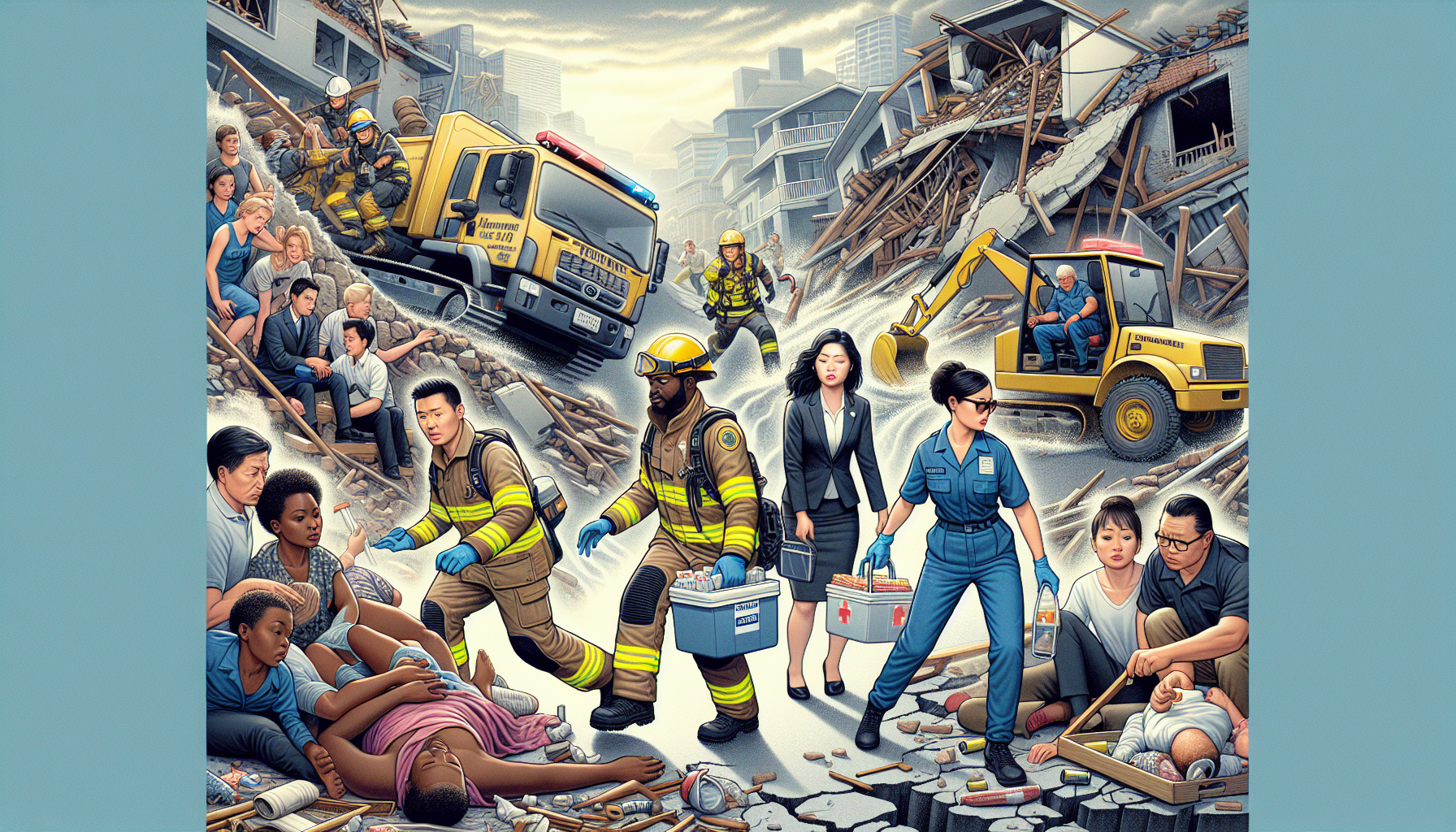
Once a disaster strikes, the clock starts ticking. Teams deploy swiftly, often operating in chaotic environments where every second counts. Their training equips them to handle various situations, from coordinating evacuations to providing medical care on the ground. This adaptability is essential; for example, in the aftermath of a major earthquake, responders may need to rescue individuals trapped under rubble while simultaneously establishing a medical triage to treat the injured.
Collaboration is another hallmark of effective emergency response. These teams work not only within their units but also alongside local authorities, non-profits, and volunteer organizations. For instance, during Hurricane Katrina, a network of emergency responders, including firefighters, medics, and volunteers, joined forces to provide shelter, food, and medical assistance. By pooling resources and expertise, they create a more robust support system for those in need.
Each disaster presents unique challenges that require specialized strategies. Teams often undergo extensive training exercises that simulate real-world scenarios, enabling them to respond efficiently. This includes learning how to navigate challenging terrains, operate equipment, and communicate with other agencies, all while under pressure. Such preparedness can mean the difference between life and death.
In addition to immediate response, these teams play a critical role in long-term recovery efforts. Following a disaster, they assist in rebuilding efforts, helping communities return to a semblance of normalcy. This may involve assessing infrastructure damage and identifying resources for rebuilding, thereby fostering resilience against future incidents.
Strategies For Effective Disaster Management
Effective disaster management strategies hinge on a few key elements that enable emergency response teams to operate efficiently and with purpose. A well-structured communication plan is vital, ensuring that all parties involved, from first responders to local government officials, are kept informed. Clear channels of communication prevent misunderstandings and encourage a coordinated approach to managing resources and deploying services. For example, during wildfires in California, real-time updates via social media and alerts allowed teams to direct evacuations and allocate fire-fighting resources without delay.
Risk assessment is another strategic pillar. Teams conduct thorough evaluations of potential threats in their respective areas, taking stock of geographical vulnerabilities and the needs of the local population. This preemptive analysis guides their preparations. In flood-prone regions, for instance, responders learn which neighborhoods are most susceptible to rising waters. They even go so far as to stockpile necessary supplies in strategic locations, ready to mobilize at a moment’s notice when disaster strikes.
Drills and training exercises are crucial in laying the groundwork for effective action. These sessions are often scenario-based, not only honing technical skills but also enhancing team dynamics. When responders practice together, they build trust and learn to work fluidly under stress. For instance, simulating a mass casualty event helps refine triage methods and improves the response time during actual emergencies by making the team more familiar with roles and responsibilities in high-pressure situations.
Engaging the community is another significant tactic. Emergency response teams actively involve local residents in preparedness initiatives, fostering a sense of ownership and readiness. This grassroots approach often includes disaster response training for citizens, enabling them to assist neighbors and loved ones until professional help arrives. During significant winter storms in the Northeast, communities that had undergone preparedness training were often better equipped to manage the immediate aftermath, helping one another with snow removal and emergency supply distribution.
Finally, evaluating each response post-disaster allows teams to learn from their experiences. After-action reviews help identify what went well and pinpoint areas for improvement, shaping future strategies. This reflective practice ensures that lessons are not lost, providing a blueprint for enhancing response efforts and ultimately increasing safety and resilience against future dangers.
Challenges Faced By Emergency Response Teams During Crises
Operating in the midst of a disaster poses difficulties that can challenge even the most skilled emergency response teams. One of the foremost issues is the unpredictable nature of disasters themselves. Each incident, whether a hurricane, earthquake, or flood, brings its own set of variables, complicating planning and execution. For instance, shifting weather patterns can alter a storm’s path suddenly, forcing teams to adapt their strategies on the fly. When Hurricane Harvey struck Texas, emergency responders had to deal not only with the storm’s initial impact but also the subsequent flooding, which caught many off guard despite the forecasts.
Logistical challenges add another layer of complexity. Supplying a team with the necessary equipment, food, and medical resources during a crisis can be a formidable task. Access to certain areas may be cut off due to debris or flooding, making delivery of essential items problematic. During the aftermath of Superstorm Sandy, some communities experienced delays in receiving aid because access routes were either blocked or destroyed, leaving residents in dire conditions waiting for help.
Human factors also play a significant role. Emergency responders often work long hours under intense conditions, leading to physical and mental exhaustion. This fatigue can impair decision-making abilities and reduce efficiency. For example, during the wildfires in Australia, many responders faced not only environmental hazards but also the psychological toll of losing homes and seeing their communities struggle. Maintaining morale and ensuring mental health support are critical yet frequently overlooked aspects of disaster response.
Communication barriers can further complicate coordination efforts. A diverse range of agencies—including local governments, federal agencies, non-profits, and volunteers—often come together in the face of a disaster. Miscommunication or lack of timely updates can result in duplicated efforts or, conversely, critical gaps in service. When the 2010 earthquake hit Haiti, many international organizations arrived to assist, but poor communication among responders hampered effective resource allocation, leading to confusion during the initial phases of recovery.
Training and preparation can mitigate some of these challenges, but they cannot eliminate them entirely. Emergency response teams must remain adaptable, ready to pivot their strategies as situations evolve. This flexibility is essential for effectively addressing the myriad of dangers presented during a crisis, ensuring that they can pivot on a dime to meet the changing needs of affected populations.

